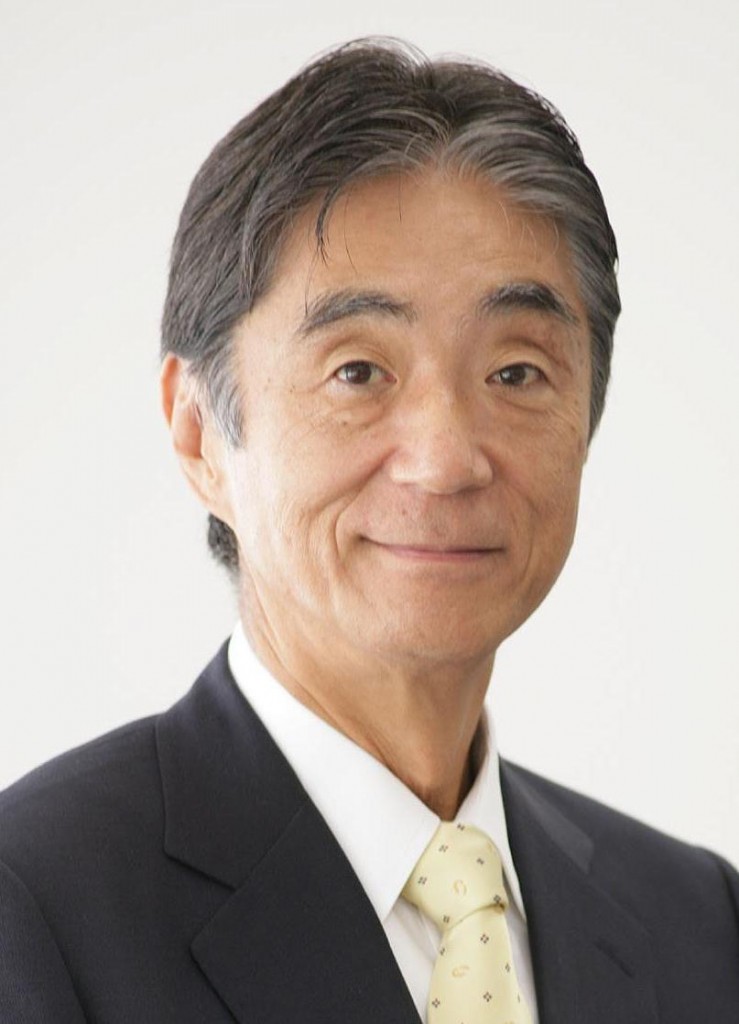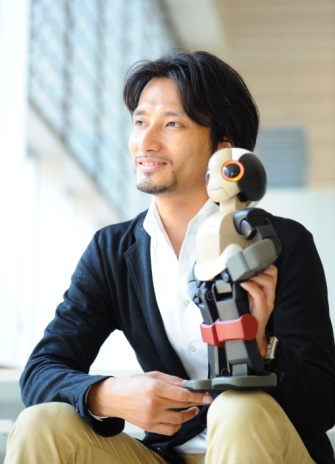Keynote Lectures
- Keynote Lecture 1: Monday, March 4 (15:30-16:30) Yuichiro Anzai
- Keynote Lecture 2: Wednesday, March 6 (16:40-17:40) Tomotaka Takahashi
Human-Robot Interaction by Information Sharing
Yuichiro Anzai
Abstract
In the plenary talk addressed at ROMAN92, considered as the first scientific meeting for human-robot interaction [1], I noted that ‘one of the noticeable features of the current work on human-robot communication is that it generally lacks attention to computer science, particularly to human-computer interaction’ [2]. Until that time the field of HRI had been covered by industrial robotics, remote control and augmented reality, and much less attention had been paid to interaction per se, or the design of interactive systems supported by computers and computer network technology.
Twenty years after, we are in a very fruitful period of time for the development of HRI, with the plentiful contribution of many researchers and developers with challenging minds. We are now fully aware that HRI is a growing and prospering field of research, related deeply with the neighboring field of human-computer interaction. A notably wide spectrum of work has been developed, from theories and models to the design and implementation of interactive systems, and further to a variety of applications such as control, assistance, rescue and entertainment.
At least two points are essential as the backgrounds of the research of both HRI as a whole and our own. The first point is that human-centric analysis and design is indispensable for HRI, however, it needs to be based upon, or augmented by, the solid foresight and implementation of advanced technology from robotics and control engineering to computer and communication sciences. The development of HRI shall be on the dynamic balance between humans and technology, that is, it must be on the trajectory of an ellipse with two foci – humans and technology. HRI can metaphorically be a point on an ellipse’s trajectory whose sum of the distances from the human focus and the technology focus is constant.
The second point is that we need some central or transversal concepts that play a leading role in the design and management of HRI. Though there are several strong candidates, I chose the concept of information sharing, referring to the state of interaction where interacting systems, or agents, share information. This notion of interaction is much related to the concept of phatic communion proposed by B.K.Malinowski as early as in the 1920’s [3] in the context of linguistic communication, as well as to those of knowing and believing that have been dealt with in cognitive science and artificial intelligence.
With these contexts and backgrounds in hand, the talk is three-fold. First, I provide a brief survey of the past and present status, as well as some future prospect, of HRI research, particularly based on the meta-model of an ellipse with the human focus and the technology focus.
Second, let me talk about the results from our HRI project, named PRIME (Physically-grounded human-Robot-computer Interaction in Multi-agent Environment) started in April 1991 as a particular example of the development upon the ellipse model. Within PRIME project, my colleagues, students and I developed and implemented a variety of hardware, software, interface systems and artificial intelligence systems such as a module-based hardware, a real-time basic software, a middleware for sensor networks and human-robot interactive systems including multiple robot systems.
The third topic in the talk is to provide, from the viewpoint of information sharing, the more recent development of HRI research that has been done since 2001 at my lab, now Imai lab led by Michita Imai, at Keio University, with colleagues at ATR laboratories and other institutions. It includes examples of the research on sharing social protocols, attention, eye gaze, word meanings, cognitive spaces, gestures and empathy in human-robot interaction.
HRI is a growing and enlarging field that is open to anyone interested in the interaction of humans and robots: the talk touches only bits of its enchantment, especially from my own experience and viewpoints. Yet I bet that it contains some important bits for the prospect of HRI research to contribute to the future of humans and their society.
References
[1] M.A.Goodrich and A.C.Shultz, Human-robot Interaction: A survey, Foundations and Trends in Human-Computer Interaction, Vol.1, No.3, 203-275, 2007.
[2] Y.Anzai, Towards a new paradigm of human-robot-computer interaction, Proc. of the IEEE International Workshop on Robot and Human Communication, 11-17, 1992.
[3] B.K.Malinowski, The problem of meaning in primitive languages, In C.K.Ogden and I.A.Richards (eds.), The Meaning of Meaning: A Study of the Influence of Language upon Thought and The Science of Symbolism, Routedge & Kegan Paul, 1923.
Biography
Yuichiro Anzai started research on human cognitive processes and machine learning in mid 1970’s, and spent 1976-78 and 1981-82 at Carnegie-Mellon University as a post-doc and a visiting assistant professor, respectively. After coming back to his country, he has kept working on learning and problem solving as well as doing extensive research on human-robot interaction since 1991 at Keio University and Hokkaido University. He published numerous academic papers and books, including Pattern Recognition and Machine Learning, Concepts and Characteristics of Knowledge-based Systems (co-ed) and Symbiosis of Human and Artifact Vols. 1 and 2 (co-ed).
He spent eight years as Dean of Faculty of Science and Technology, Keio University (1993-2001), then eight more years as President of the same university (2001-09), while he led with his colleagues a large-scale commemorative project for Keio’s 150th anniversary. In October 2011 he accepted the present position of President, Japan Society for the Promotion of Science, the representative research funding agency in Japan, keeping the position of Executive Academic Advisor for Keio University.
Anzai has been Chairperson of University Subcouncil, Central Council for Education, Ministry of Education, Culture, Science, Sports and Technology (MEXT), as well as many others. His past public contribution includes Advisor to MEXT (2010-11), Chairperson of Association of Pacific Rim Universities (2008-09), Member of the Science Council of Japan (2005-11), and President of the Information Processing Society of Japan (2005-07) and Japanese Cognitive Science Society (1993-94).
The awards received by Anzai include Medal with Purple Ribbon from the Japanese Government, Commandeur de l’Ordre des Palmes Académiques from the French Government, and honorary doctoral degrees from Yonsei University in Seoul and École Centrale de Nantes in Nantes. He received M.S. in 1971 and Ph.D. in 1974 from Keio University.
The Creation of a New Robot Era
Tomotaka Takahashi
Abstract
In recent years, it may seem that technology trend is in a regression process, from technology itself to humanlike aspects. Then, intuitive and comfortable operating environment and the technology which enables such environment become to draw an attention, rather than what we called "high performance" "high specifications" whose advertising message simply speaks as is today.
A sense of distance between human and mechatronics products becomes much smaller accordingly, and available information in an interactive manner drastically swollen out of our daily life. Compact humanoid robot which may communicate with us, stands at the very leading edge of technology roadmap. It might be like a smart phone with arms and legs or a state-of-the-art "'Tinker Bell", and everyone can involve in information exchange in casual conversation via such humanoids.
We can enjoy innocent conversation with humanoid, due to a kind of personification. As a result it allows us to gather our daily life information and to utilize them for command and control purpose on any mechatronics products, services and information. I would like to discuss such future life with intelligent humanoid, which would be realized in the next 15 years, with certain demonstration of a latest humanoid.
Biography
Founder and CEO of Robo Garage, research associated professor of The University of Tokyo, visiting professor of Fukuyama University and Osaka Electro-Communication University. Solely research, develop, design, and manufacture humanoid robots from scratch. Master pieces are Ropid, Chroino, FT, Evolta, Tachikoma, and Vision.
Awards; TIME magazine ‘Coolest Inventions 2004’, Popular Science magazine ‘33 persons changing the future’, Guinness world record of long distance remote controlled robot car, and Robo-cup world champion 2004-2008.



 e Lecture 1
e Lecture 1


